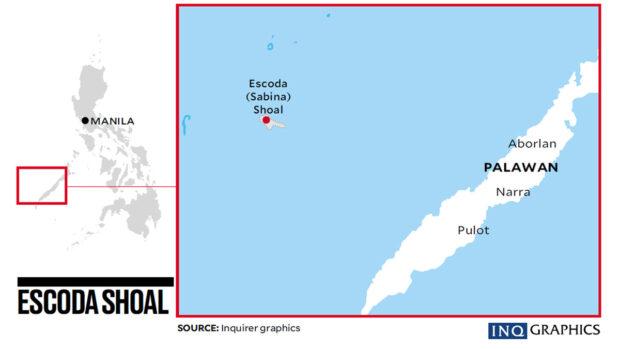In the crystal clear waters of the South China Sea lies a battle for sovereignty that has captured the attention of the world. The Sabina Shoal Standoff, a dispute over a tiny, uninhabitable reef, has become a symbolic battleground for competing claims and power plays in one of the most strategically important regions on the planet. As tensions escalate and international interests collide, the future of the South China Sea hangs in the balance.
The Historical Context of the Sabina Shoal Dispute
dates back to the early 20th century when various nations began staking their claims in the resource-rich waters of the South China Sea. The Sabina Shoal, located near the Spratly Islands, became a focal point for territorial disputes between China, the Philippines, and Vietnam. The strategic location of the shoal, as well as its rich fishing grounds and potential oil and gas reserves, has made it a coveted prize for all parties involved.
Over the years, tensions have risen as each country has sought to assert its sovereignty over the Sabina Shoal through military presence, diplomatic maneuvers, and even construction of artificial islands. The standoff continues to this day, with no clear resolution in sight. The Sabina Shoal dispute serves as a microcosm of the larger power struggle for control of the South China Sea, highlighting the complex geopolitical dynamics at play in the region.
Key Players and Stakeholders Involved in the Standoff
The standoff at Sabina Shoal in the South China Sea involves a complex web of key players and stakeholders, each vying for control over the disputed territory. At the forefront are the countries directly involved in the conflict, including China, the Philippines, and Malaysia. These nations have long-standing claims to the region and are unwilling to back down, leading to heightened tensions in the area.
In addition to the main players, there are also various stakeholders with vested interests in the Sabina Shoal standoff. International bodies such as the United Nations and the Association of Southeast Asian Nations (ASEAN) have been closely monitoring the situation and calling for peaceful resolutions. Furthermore, regional fishermen and environmental activists are concerned about the impact of the conflict on marine life and the surrounding ecosystem. With so many different interests at play, finding a solution that satisfies all parties involved will be a challenging task.
Strategies for De-escalation and Diplomatic Resolution
| Key Players: | China, Philippines, United States |
| Current Situation: | The Sabina Shoal, located in the South China Sea, has become a hotspot for tensions between China, who claims sovereignty over the region, and the Philippines, who also assert their rights. |
In the face of escalating tensions, it is essential for all parties involved to consider . Here are some key steps that can be taken to diffuse the standoff:
- Open Communication: Establishing direct lines of communication between the involved parties can help prevent misunderstandings and promote dialogue.
- Third-Party Mediation: Bringing in a neutral third party, such as the United Nations or a regional organization, can help facilitate negotiations and find a peaceful resolution.
- Mutual Respect: Recognizing each other’s sovereignty claims and seeking compromises based on mutual respect can be crucial in finding a diplomatic solution to the conflict.
Implications for Regional Security and International Relations
The Sabina Shoal standoff in the South China Sea has significant . The dispute over this strategically important maritime feature has escalated tensions between countries in the region, particularly China and the Philippines. The sovereignty battle over Sabina Shoal has highlighted the complex geopolitical dynamics at play in the South China Sea, where multiple countries lay claim to various islands and reefs.
The standoff at Sabina Shoal has raised concerns about the potential for conflict in the region, as both China and the Philippines are unwilling to back down from their respective claims. The dispute has also drawn the attention of other countries with interests in the South China Sea, further complicating the situation. The outcome of this standoff will have lasting , as it could set a precedent for future conflicts over territorial disputes in the region.
The Way Forward
the Sabina Shoal standoff serves as a stark reminder of the complex and contentious territorial disputes in the South China Sea. As countries vie for control over these islands and waters, tensions continue to rise, threatening regional stability and security. It is imperative that all parties involved exercise restraint, adhere to international law, and work towards peaceful resolutions to prevent further escalation of conflicts in this strategic and valuable maritime region. Only through diplomacy and cooperation can the nations of the South China Sea truly uphold sovereignty and ensure a peaceful and prosperous future for all.
